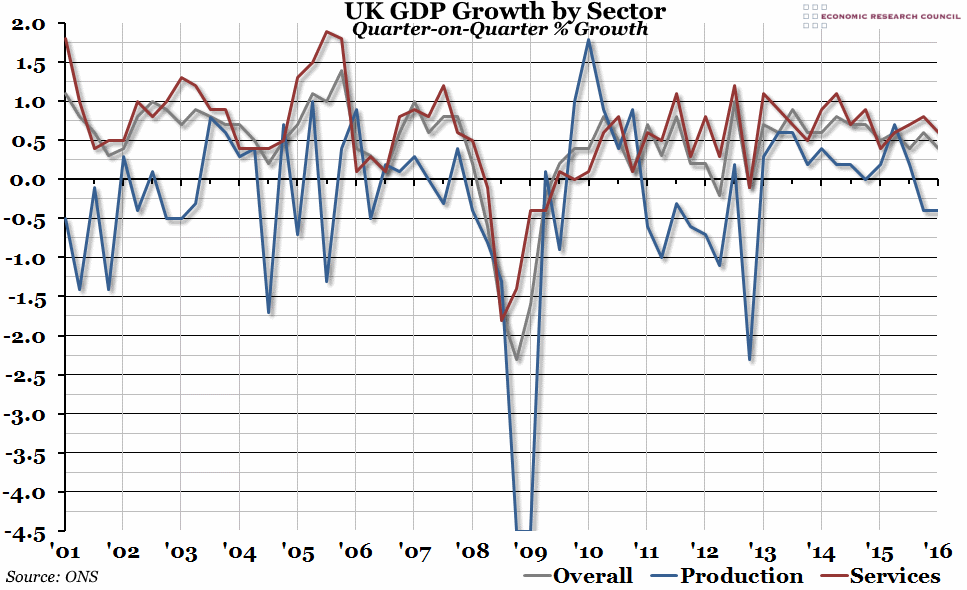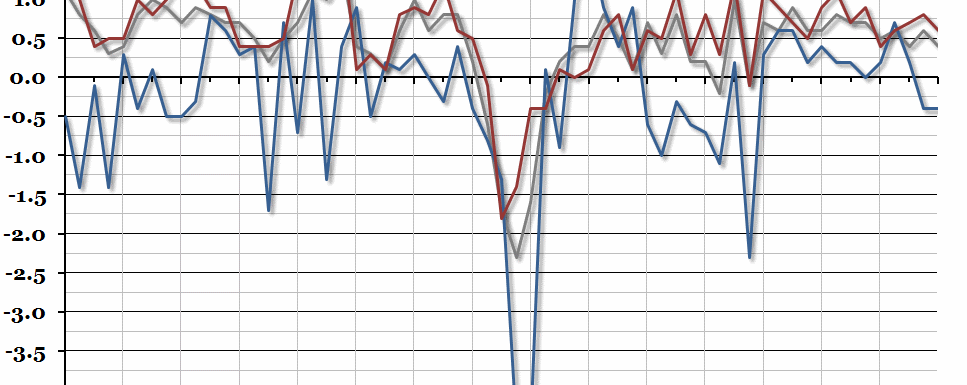
Summary
The preliminary estimate of first quarter GDP growth was released this morning, and it showed that growth had slowed at the beginning of this year to 0.4% (from 0.6% at the end of 2015). Looking at individual sectors, only services kept the overall figure positive, and the production sector has entered a recession for the first time since 2012.
What does the chart show?
The chart shows percentage growth of Gross Domestic Product (GDP) from one quarter to the next, both for the whole UK economy (the grey line) and for the two biggest sectors: services in red, and production (which includes manufacturing) in blue. Together, these two sectors make up an estimated 93.5% of the UK economy (construction makes up 5.9%, and agriculture the remaining 0.6%).
Why is the chart interesting?
The headline growth figure of 0.4%, while lower than last quarter’s number, was broadly in line with recent forecasts. However, the dominance of the (relatively fast growing) service sector in the UK hides the recent poor performance of the production sector, which has now entered a recession (defined as two consecutive quarters of negative growth rates). Although the production sector has tended to grow at a slower rate than the headline GDP figure, it has only been in recession on four separate occasions over the last fifteen years (2001, 2002/03, 2008/09, and 2011/12). This time, the shrinking of output is largely due to a significant fall in the output of the mining and quarrying industries (which includes the extraction of oil and natural gas from the North Sea), driven by low oil and commodity prices. This is likely to recover when (or if) oil prices return to a level previously considered as “normal”. However, manufacturing has had a negative growth rate for four out of the last five quarters, and shrunk by 0.4% in the first quarter of the year. This reflects a more long-term problem. And of course, for anyone worried about the relative size of the service sector in the UK, for every quarter where services outperform the production sector that gap widens.

